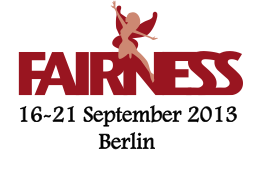Speaker
Mr
Yuni Watanabe
(Department of Physics, The University of Tokyo)
Description
The masses of hadrons like protons and neutrons are considered to be partially due to the result of the spontaneous chiral symmetry breaking. The chiral symmetry is known to be restored in hot or dense medium and the order parameter of the chiral symmetry breaking <qbar q > diminishes. We need to study this effect quantitatively in order to improve our understanding of the origin of mass.
Spectroscopy of deeply bound pionic atoms provides us with the evidence of the restoration of chiral symmetry breaking in nuclear medium experimentally. From the past experiment using the (d, He3) nuclear reaction, which were performed at GSI [1], it was deduced that the order parameter of chiral condensate
is reduced by 30 percent at the nuclear saturation density compared with the vacuum value of. Currently we are performing a series of experiments to study systematically several deeply bound pionic atoms with stable nuclei at RIBF in order to reduce the error of <qbar q >. Thanks to high intensity deuteron beam at RIBF, we can achieve higher count rate than previous experiment and the high rate is indispensable for the systematic study. We conducted a pilot experiment employing Sn122 target in 2010 and observed the deeply bound pionic Sn121 states. The angular dependence of the cross section of pionic atom formation was measured for the first time [2]. In parallel with the experiment at RIBF, we are planning the spectroscopy of pionic atoms with unstable nuclei using inverse kinematics reaction d(HI, He3) where HI denotes unstable nuclei. The measurement with unstable nuclei such as neutron rich nuclei is highly motivated because it enable us to study the <qbar q > at different nuclear density due to the neutron skin effect and the density dependence of <qbar q >. Our recent simulation study shows that the experiment is feasible by employing active target deuterium gaseous TPC and an array of silicon detectors placed inside it to measure the full energy of He3 [3]. In this contribution, we will present the the experimental setup and the recent analysis of the pilot experiment at RIBF. The detailed results of the feasibility study of the inverse kinematics will be presented in respect to the resolution and the yield of the pionic atom. [1] K.Suzuki et al. , Phys. Rev. Lett. , 92, 072302(2004). [2] T. Nishi et al. , Accel. Prog. Rep. 45, iv (2012). [3] K. Okochi et al., to be submitted to Nucl. Instr. Meth.
Primary author
Mr
Yuni Watanabe
(Department of Physics, The University of Tokyo)

